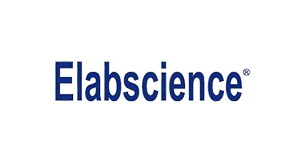Recombinant Human CCL14a/HCC-1 Protein(Sumo Tag)
Recombinant Human CCL14a/HCC-1 Protein(Sumo Tag)
SKU
ELSPDEH100598-1
Packaging Unit
1 mg
Manufacturer
Elabscience Biotechnology
Availability:
loading...
Price is loading...
Special promotion: Enjoy a 10% discount on Elabscience recombinant proteins through September 30, 2025.
Promo code: ELABPQ3
No additional discounts available during this period.
Uniprot: Q16627
Accession: Q16627
Background: CCL14a/HCC-1 has an important biological role in other mammals by evolving under positive selection that has been lost in Ochotonidae (subgenera Pika and Lagotona). CC chemokine ligand 14, CCL14a/HCC-1, is a human CC chemokine that is of recent interest because of its natural ability, upon proteolytic processing of the first eight NH2-terminal residues, to bind to and signal throμgh the human immunodeficiency virus type-1 (HIV-1) co-receptor, CC chemokine receptor 5 (CCR5). Embryo implantation is a complex process involving blastocyst attachment to the endometrial epithelium and subsequent trophoblast invasion of the decidua. We have previously shown that the chemokines CX3CL1 and CCL14a/HCC-1 are abundant in endometrial vasculature, epithelial, and decidual cells at this time, and that their receptors, CX3CR1 and CCR1, are present on invading human trophoblasts. CX3CL1 and CCL14a/HCC-1 promote trophoblast migration.
Bio Acitivity: Not validated for activity
Sequence: Gly28-Asn93
Purity: > 90% as determined by reducing SDS-PAGE.
Formulation: Lyophilized from a 0.2 μm filtered solution in PBS with 5% Trehalose and 5% Mannitol.
Reconstitution: It is recommended that sterile water be added to the vial to prepare a stock solution of 0.5 mg/mL. Concentration is measured by UV-Vis.
Endotoxin: < 10 EU/mg of the protein as determined by the LAL method.
Calculated MW: 20 kDa
Observed MW: 25 kDa
| SKU | ELSPDEH100598-1 |
|---|---|
| Manufacturer | Elabscience Biotechnology |
| Manufacturer SKU | PDEH100598-1 |
| Package Unit | 1 mg |
| Quantity Unit | STK |
| Product information (PDF) |
|
| MSDS (PDF) |
|

 Deutsch
Deutsch










